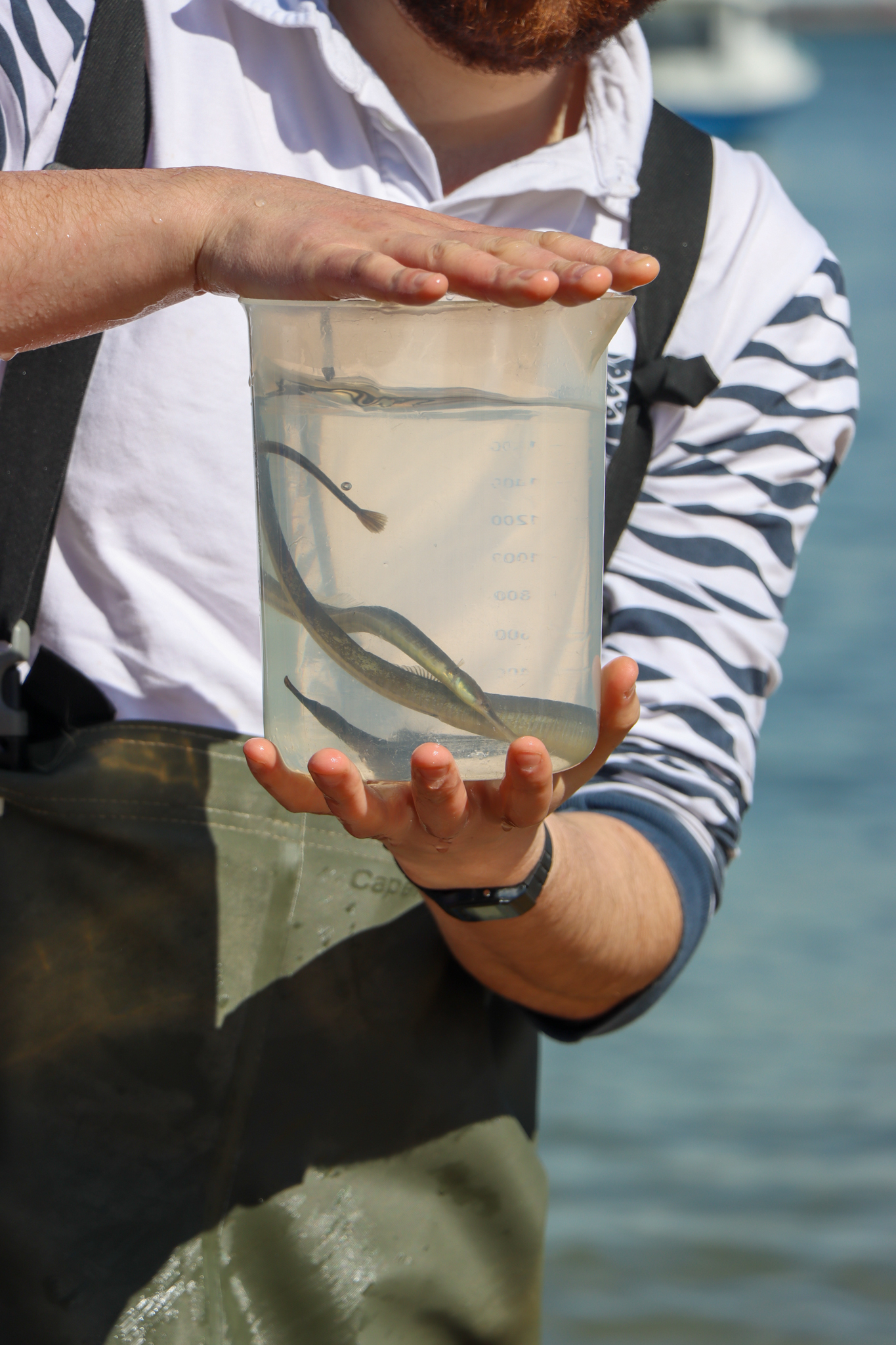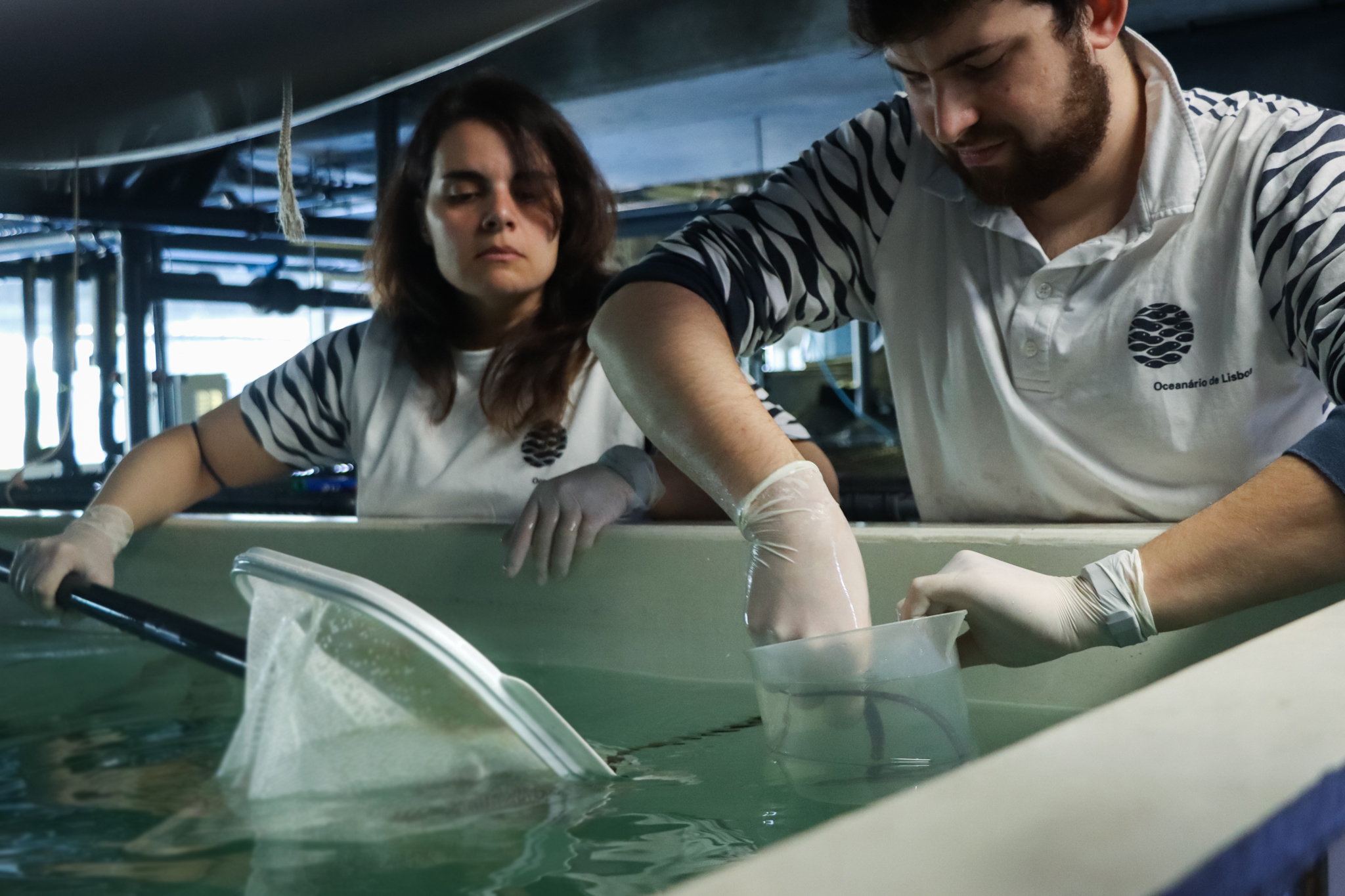The greater pipefish - Syngnathus acus - are back home
The Greater pipefish are back home, after one year of replacement accomodation
 In March 2022, after the collapse of the pillar and pontoon at Trafaria, in the Municipality of Almada, MARE researchers rescued a group of greater pipefish, fish from the seahorse family, with protection status. Five greater pipefish and 23 seahorses (four common seahorses Hippocampus hippocampus and 19 long-snouted seahorses Hippocampus guttulatus) were collected.
In March 2022, after the collapse of the pillar and pontoon at Trafaria, in the Municipality of Almada, MARE researchers rescued a group of greater pipefish, fish from the seahorse family, with protection status. Five greater pipefish and 23 seahorses (four common seahorses Hippocampus hippocampus and 19 long-snouted seahorses Hippocampus guttulatus) were collected.
Together with the Ocenário de Lisboa team, welcomed the species and kept them in special conditions, in order to return them to nature when the habitat conditions were restored. The MARE-ISPA team studied them. "Since then we have been studying this community, both in terms of morphological characterization, the relationship with the habitat, we have collected DNA samples for future analysis, and we are doing dives throughout this riverfront to identify possible threats and / or suitable places for these species. . This is a group of bodies protected by national (decree-law nº 38/2021) and international laws (Annex II of the CITES Convention, Annex II of the Berne Convention and resolution WCC-2020-Res-095 at the IUCN Congress), and are considered flagship species, that means, they are organisms that gather the sympathy of the general public, and by promoting conservation actions aimed at these organisms and their habitat, we are indirectly promoting conservation as a whole, benefiting many other species", explains MARE researcher Gonçalo Silva.
One year later all these new fish, along with the original group of five individuals, were successfully reintroduced into Tejo river, in a joint operation of ICNF - Instituto da Conservação da Natureza e das Florestas, and the Oceanário de Lisboa, with the collaboration of MARE-ISPA and Almada City Council, partners in the CavAlMar research project. This was a joint action that aims to "develop efforts for the conservation of syngnathids, iconic species that are very vulnerable to anthropogenic disturbances, but also in the preservation of the natural values of the Tagus estuary", concludes MARE researcher.

